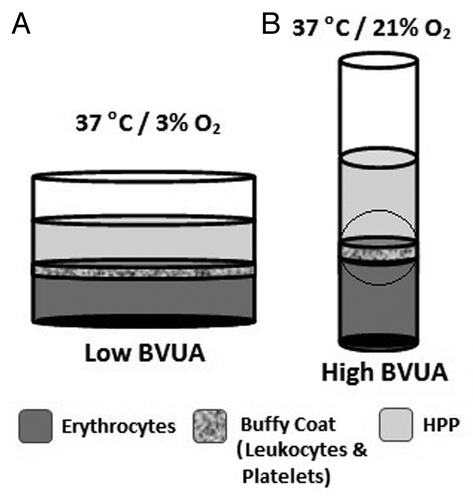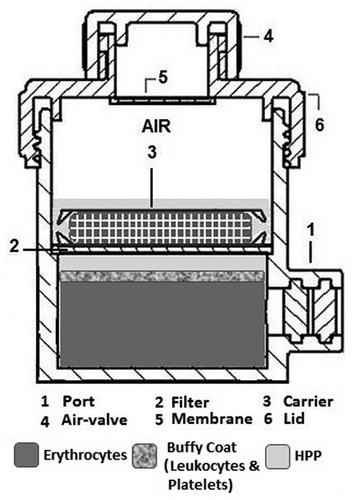Figures & data
Figure 1. Schematic comparing the two approaches for culturing PBCs under hypoxic stress-stimulation, to obtain hypoxia preconditioned plasma (HPP). (A) Blood can be cultured at a low blood volume per unit area (BVUA; area refers to the well cross-sectional area), under global hypoxia, within an O2-controlled chamber. Here, the large surface area ensures the uniform exposure of PBCs to the chosen O2 tension. (B) Blood can be cultured within a normoxic chamber at a high BVUA, so that O2 consumption by PBCs gradually generates a pericellular hypoxic micro-environment (shown by the circle). Here, the profile of O2 tension adjacent to the buffy coat layer will be determined by the proportion of PBCs that remain viable and aerobically active. Typical values for a low and high BVUA are < 0,25ml/cm2 and > 1ml/cm2, respectively (based on preliminary data).

Figure 2. Schematic showing the bioreactor device for one-step harvesting and delivering protein factors present in hypoxia preconditioned plasma (HPP), through a cell-free matrix carrier. The device incorporates a nano-porous filter between the blood and carrier compartments, so that HPP sterilization and removal of cellular material occurs automatically during factor loading onto the matrix carrier. Note that since the plasma is passively separated from the blood cells, which sediment over time during conditioning, no centrifugation is required for HPP isolation (adapted from Hadjipanayi et al., 2013Citation27).

